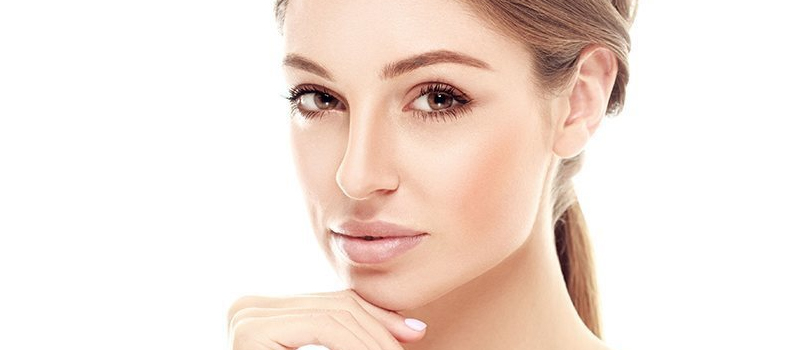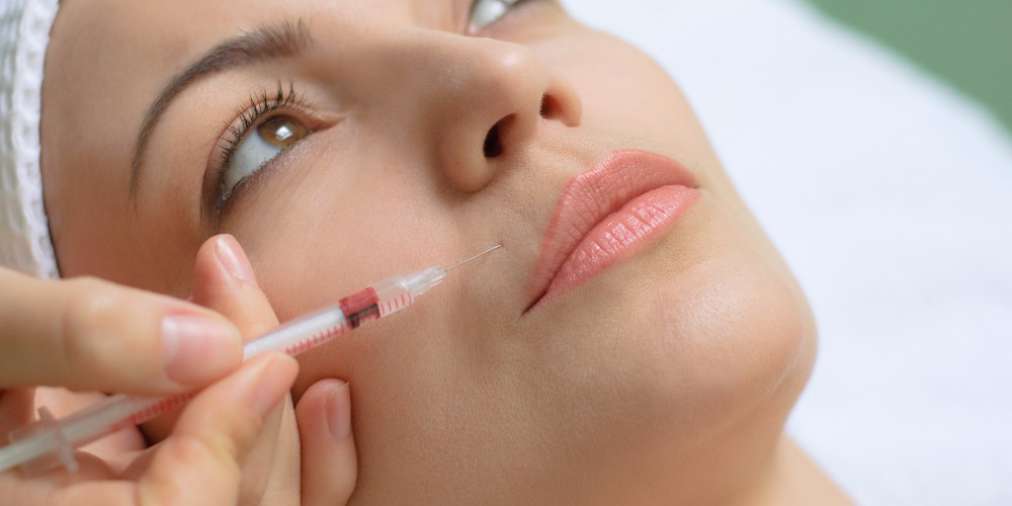At this point in time, you can pretty much guarantee that everyone has heard of Botox at some point or another. The stars of Hollywood have helped to make Botox an incredibly popular product all around the world. Nevertheless, there is a good chance that you’re not entirely familiar with Botox. Do you know what it really is? Do you know how it works and what it can be used for? In all likelihood, the answer is no. Thankfully, you’ve come to the right place. In this comprehensive guide, you’re going to learn all about Botox.
What Is Botox (Botulinum Toxin)?
Botox is a drug produced from the Clostridum botulinum, a toxin. In fact, it is the very same toxin that has been linked to botulism, a food poisoning that causes life-threatening symptoms. Botox is utilized in small doses to treat a broad range of health problems, such as facial wrinkles, severe underarm sweating, chronic migraines and overactive bladder.
The most prominent dermatologists and other medical experts around the world recommend Botox to their patients. While the drug only produces a temporary effect, by paralyzing and weakening specific muscles, it is very effective. In most cases, the effects will last up to three months. However, it has also been known to last up to 12 months, if properly administered.
The Botulinum toxin works by prohibiting the release of acetylcholine from the axon endings. Acetylcholine, a neurotransmitter, is released at the neuromuscular junction from axon endings. By prohibiting the neurotransmitter from being released, the targeted muscles become weak and paralysis. In the case of Botox, the effect is only temporary, lasting anywhere from three to 12 months.
While Botulinum is considered lethally toxic, the quantity utilized in humans only is small to prevent toxicity.
What Is Botox Made Of?
As mentioned above Botox is made from neurotoxin that is product by Clostridium botulinum, known as botulinum toxin. The purified botulinum toxin type A is utilized in small doses to block nerve activity in certain muscles, such as those found in the face and neck. The U.S. Food and Drug Administration continue to monitor the use of Botox, which is now classified as the “number one cosmetic medical treatment in the United States.”
In 2011, American physicians utilized Botox in approximately six million procedures. While it takes about three days to see the full effect of Botox, patients are very satisfied with the results. In fact, most patients have self-reported amazing results and swear that it makes them look and feel younger.
Many Hollywood celebrities utilize Botox to correct facial imperfections. It is not unusual to hear these celebrities praise the drug. While it is rare, some celebrities will continue to undergo procedures with Botox until they develop what is known as “frozen face.” Jenny McCarthy and Joy Behar had opening admitted to utilizing Botox to treat their imperfection. Both celebrities also admit that they love the drug, because it makes them look better in person and on camera.
However, you have a list of actors that refuse to touch the drug. Such celebrities include Meryl Streep, Melissa Leo and Kate Winslet. No matter how much some people try to avoid the Botox bandwagon, just about everyone in Hollywood has undergone the procedure at least once. In fact, even male actors are turning to Botox to improve their appearance, as it reduces fine lines and wrinkles and fills in acne scars.
Is An Allergy Test Required?
Unlike some types of dermal fillers, Botox typically does not require allergy testing prior to administration. However, physicians will recommend their patients who have experienced anaphylaxis in the past to undergo allergy testing. During the test, an allergist or physician will inject a low dose of the botulinum toxin in a specific muscle. If any signs of an allergic reaction are noted, Botox will be ruled out as a treatment option.
Signs of an allergic reaction to Botox may include anything from lightheadedness, swelling of the tongue, lips, throat or face, hives and difficulty breathing. These are life-threatening symptoms that call for emergency medical treatment. In most cases, these symptoms will appear immediately after the initial injection.
Other symptoms that may or may not be considered life threatening include nausea and vomiting. All of these symptoms should be immediately reported to the physician who administered the drug.
What Is Botulinum Toxin Used For?
Now that you’ve learned a little more about Botox and the Botulinum Toxin, it is time to learn about its purposes. What can this specific chemical be used for? You’ll be surprised by the answer. The botulinum toxin can be used for a wide range of purposes, but it is primarily used to help diminish the signs of aging on the face. The botulinum toxins available from MayLips can be used for a wide assortment of purposes. Some of those purposes will be explored in greater depth below.
Treating Cervical Dystonia And Stiffness
First and foremost, you should know that Botox is commonly used to treat cervical dystonia and stiffness. People experience cervical dystonia will experience intense spams in their neck muscles. Botox is capable of calming these muscles and putting an end to the patient’s suffering. These products are also good for treating muscle spasms and stiffness.
Treating Hyperhidrosis
Some people suffer from a rare disease known as hyperhidrosis. This disease causes the patients to sweat abnormally from the underarm area. This is yet another problem that the botulinum toxin is good for. It is capable of rectifying the problem, so the patient will sweat normally once again.
Some Eye Muscle Conditions
Believe it or not, Botox can also be used to combat some eye muscle conditions, especially those caused by nerve disorders. It is commonly used to treat spasms of the eyelids and even uncontrolled blinked. It is also capable of fixing some problems, in which the eye point in separate directions.
Treating Bladder Problems
Some people with nerve disorders will suffer from an overactive bladder or incontinence. Incontinence causes the patient to leak urine. These problems can be caused by multiple sclerosis and even spinal cord injuries. If you’re suffering from one of these problems, you will definitely want to learn more about the botulinum toxin. It has been known to be an effective treatment for both.
Great For Migraines
There are tons of people that suffer from severe headaches and migraines. Most will try to use over-the-counter medications to combat these problems. Unfortunately, OTC medications do not work very well and the results are usually temporary. Botox might be a better solution to your problem. The botulinum toxin can actually be used to prevent chronic migraines. If you suffer from intense headaches more than fifteen days each month, you should definitely speak to your doctor about Botox.
Anti-Aging
A lot of women and men do not like the idea of getting older. As you begin to age, your face is going to show your age. It’ll develop fine lines and wrinkles. This is something that you may want to avoid. While it is entirely impossible to stop Mother Nature, you can still offset the problem to some degree. This is where Botox enters the picture. Botox has been known to be incredibly effective for reducing the visibility of fine lines and wrinkles on the face. Just remember that the results will be temporary. Therefore, you may need to get multiple injections to achieve and maintain the results that you desire.
Botox Is Not A Cure
It is essential to understand that the botulinum toxin is not actually a cure. It is only capable of providing the patient with short-term relief. Over a period of time, the medication will begin to wear off. When this happens, the symptoms will return. If you’re using Botox for cosmetic purposes, the fine lines and wrinkles will become more visible as the medication begins to lose its effectiveness. Therefore, patients will need to get frequent injections over a period of time to correct the problem that they’re facing. Nevertheless, Botox can be an effective treatment for many problems.
It is also a good option for those wishing to look a little bit younger.
Botulinum Toxin Types
Most individuals that are choosing to undergo Botox treatments aren’t aware of the fact that there are four different types of Botox treatments available. The four different treatments available are Botox, Dysport, Xeomin, and Myobloc.
The results of Dysport might show up faster than regular Botox, but it has been reported that Botox has longer lasting effects. Due to this, the cost of undergoing a Botox treatment will be greater than that of Dysport. With that being said, you will find that most professional clinics advertise that the results of Botox and Dysport treatment will last up to four months. However, there are a lot of professionals out there that truly believe that Xeomin provides patients with slightly longer lasting results. Xeomin is becoming more and more popular because it doesn’t require any specialty additives or refrigeration.
Along with this, a lot of patients have suggested that you are less likely to become resistant to Xeomin treatments due to its purity. It should be noted that Botox, Xeomin, and Dysport are all generated from Type A Botulinum Toxin. Myobloc is generated from Type B Botulinum Toxin and it has been reported that this type of Botox is most effective when an individual has become immune to the other types of treatment.
The Side Effects Of Botox
While Botox is an extremely powerful cosmetic enhancer that can be used to treat a variety of different conditions, it can come along with some side effects. Unfortunately, every medication and treatment on the market comes along with side effects and Botox is no different. Below you will learn about the different side effects that can be related to Botox treatment.
- Headaches – It has been highly reported that tons of individuals that received Botox treatment experienced headaches afterwards. With that being said, recent studies show that headaches are usually associated with the techniques in which the injector has injected this treatment into the body. If you experience headaches after undergoing a Botox treatment it could be due to the fact that the injector injected the treatment into the wrong muscle group. This is why it is imperative to put in the proper time and research to make sure that you choose the very best and most qualified clinic to perform the treatment.
- Pain, Swelling, And Bruising – Since Botox is injected into a targeted area with a very small, fine hypodermic needle pain, swelling, and bruising might not always occur, but it is entirely possible that some patients might experience these side effects. When these side effects show up it is usually just a result of trauma from the injection site. In fact, when patients experience these types of side effects they usually resolve themselves within the first two or three days after the treatment has been performed.


